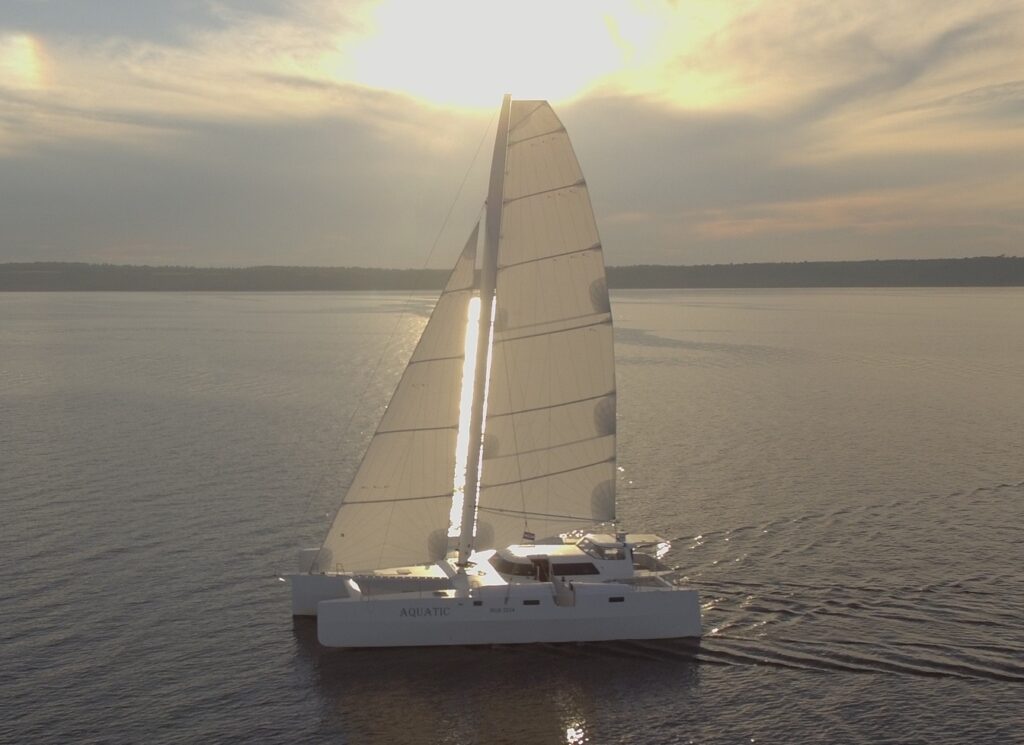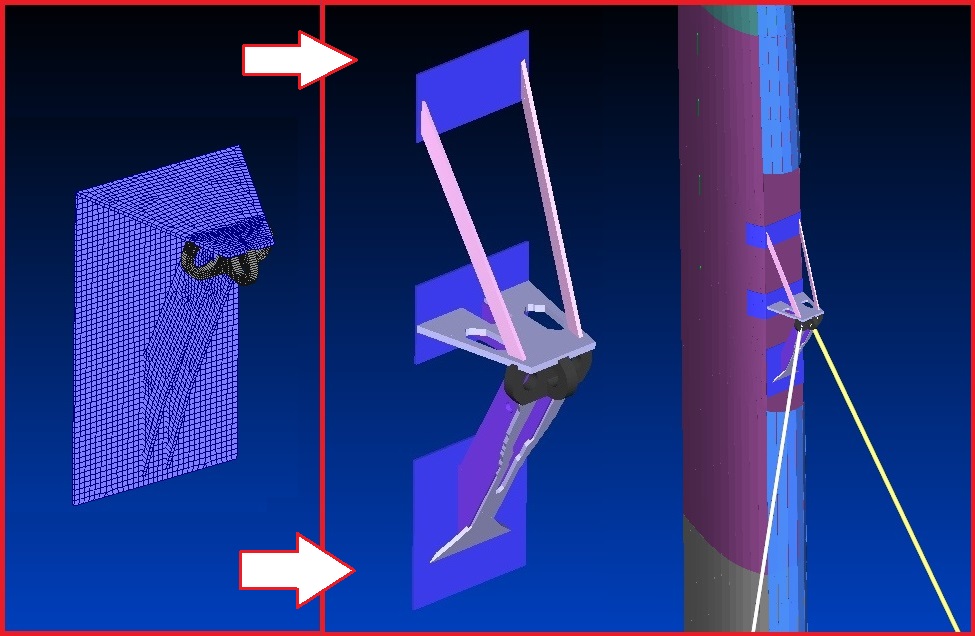Cruising trimaran Т52
Overall project description
Trimaran T52 is equipped both with wind sailing equipment and traditional marine engine. Hydrofoils (underwater wings) are used to reduce drag and increase speed in the trimaran. Composite materials are used in the design (from plywood to carbon fiber).
Our company was tasked with:
- Perform stress analysis of the trimaran hull.
- Perform weight optimization of the carbon fiber trimast mast.
Hull analysis: balancing of acting forces
A specific feature of this project is the increased complexity of determining loads acting on a trimaran as it travels in the operational state (reaching, running downwind, etc.)
In order to solve this problem we created a separate model for balancing the forces acting on the hull (Archimedes force, gravity, compression from the mast, etc.)
Hull analysis: finite element model
Stress analysis of the structure is performed with the help of detailed finite element model of the hull.
Composite materials are widely used in the design (plywood, fiberglass, carbon fiber). Upon performing stress calculations for the most loaded areas, we found optimal layups for composite plies.
Mast analysis: balancing of acting forces
Similar to the hull, determining the forces acting on the mast is a separate task. The wind load, perceived by the sail, is then transmitted through the system of movable carriages to the entire height of the mast.
Traditional methods for calculating wind loads are extremely simplified. Therefore, we created a separate program to evaluate the forces acting on the mast, based on considerations of aerodynamics and theoretical mechanics.
Since the field experiment to determine the forces acting on each carriage is extremely time consuming – we found a compromise solution in which the verification of the created mathematical model was carried out using easily obtained data (by tension of the running rigging).
Mast analysis: stress analysis and layup optimization
In the left part of the picture result of calculation original model of the mastis shown.
We found that the mast material was used inefficiently in the original design. Since the mast construction uses expensive material (carbon fiber), it was necessary to find ways to reduce the weight of the mast.
As a result, due to the introduction of spreaders (shown in right part of the picture) and the optimization of the carbon fiber layup, we ensured a reduction of the cost of the mast material by 1.6 times (!).
Mast analysis: metal bracing optimization
The key mast power node (so-called “cable stay”) perceives the load from the cable tension, which can reach values of 10 tons.
For this particularly important zone of the mast, we carried out a strenght optimization: we found the optimal topology of the cable stay in order for it to perceive all kinds of probable loads with the required margin of safety.








